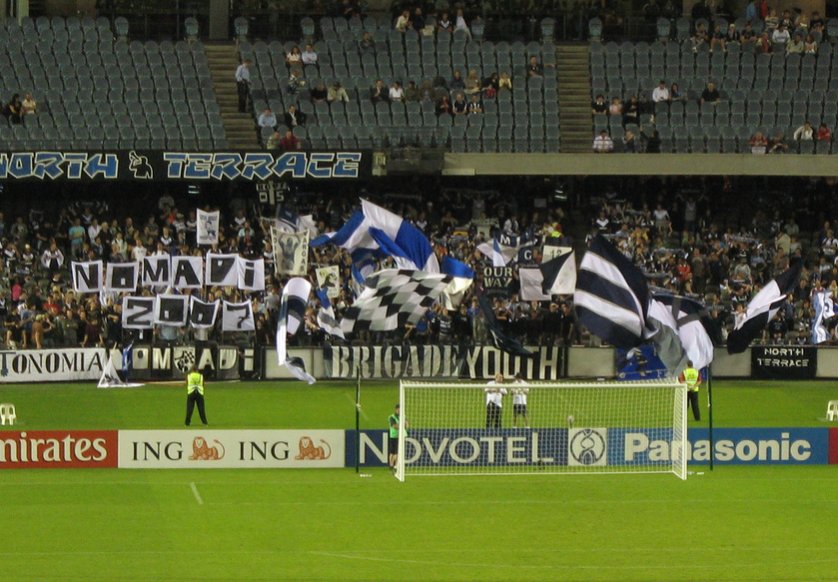A 21st Century Portrait
More often than not football and film do not make a good mix but with Zidane: A 21st Century Portrait the combination is almost perfect. The film is the creation of Turner winning artist and filmmaker Douglas Gordon and French artist Philippe Parreno and is a study of one man, Zinedine Zidane.
This film is brilliantly executed as seventeen cameras follow the every movement that Zidane makes during the course of a La Liga match between Real Madrid and Villareal in the Santiago Bernabeau Stadium.
What makes this film so good is that Zidane is captured from a range of viewpoints, from extreme close-ups to aerial views and every view in between. This not only allows the viewer to see Zizou as he moves around the field and gets involved in the play but also allows a glimpse of the various mannerisms of this intriguing player. It gives us a glimpse of how vulnerable, tiring, calculated and almost lonesome a footballer can be whilst out on the pitch doing their thing.
A soundtrack that encompasses crowd noise, ambient sounds, Zidane’s breathing and the music of Scottish group, Mogwai, compliments the footage. On occasions this soundtrack is interrupted by the voice of Zidane himself as he talks about what he does and doesn’t remember from the matches that he is involved in.
My only disappointment is that I didn’t get around to seeing this film on the big screen and only watched it at home. The reason being that this film is probably better suited to the big screen and its ability to make things larger than life. Hopefully, it gets a rerun somewhere and I do get that opportunity.
A film well worth checking out for both football fans and lovers of fine cinema. I'm not sure what David and Margaret gave this film, but I give it five stars.
This film is brilliantly executed as seventeen cameras follow the every movement that Zidane makes during the course of a La Liga match between Real Madrid and Villareal in the Santiago Bernabeau Stadium.
What makes this film so good is that Zidane is captured from a range of viewpoints, from extreme close-ups to aerial views and every view in between. This not only allows the viewer to see Zizou as he moves around the field and gets involved in the play but also allows a glimpse of the various mannerisms of this intriguing player. It gives us a glimpse of how vulnerable, tiring, calculated and almost lonesome a footballer can be whilst out on the pitch doing their thing.
A soundtrack that encompasses crowd noise, ambient sounds, Zidane’s breathing and the music of Scottish group, Mogwai, compliments the footage. On occasions this soundtrack is interrupted by the voice of Zidane himself as he talks about what he does and doesn’t remember from the matches that he is involved in.
My only disappointment is that I didn’t get around to seeing this film on the big screen and only watched it at home. The reason being that this film is probably better suited to the big screen and its ability to make things larger than life. Hopefully, it gets a rerun somewhere and I do get that opportunity.
A film well worth checking out for both football fans and lovers of fine cinema. I'm not sure what David and Margaret gave this film, but I give it five stars.





